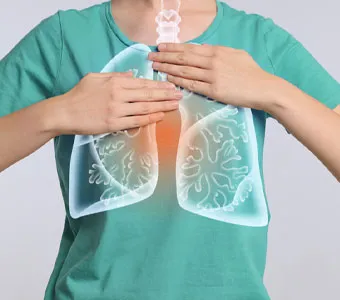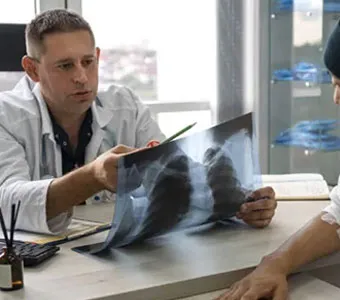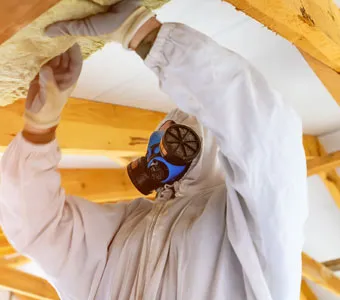How Common Is Silicosis in The Stone Industry?
The stone industry, particularly that which works with engineered stone, has seen a significant rise in cases of silicosis, a severe lung disease caused by prolonged exposure to silica dust. How common is silicosis in the stone industry?
The increasing prevalence of this disease is directly linked to the use of materials like granite, quartz, and engineered stone, which contain high levels of silica. Workers in stone fabrication and cutting are at heightened risk for this progressive disease, and the growing number of diagnoses has raised concerns across the industry.
Silicosis Cases Among Engineered Stone Workers: Rising Incidence
Recent studies, including a groundbreaking report from UCSF and UCLA, show that silicosis cases among engineered stone workers are becoming increasingly common. A significant rise in diagnosis has been observed, particularly in states like California, Colorado, and Texas.
These studies highlight how engineered stone, which contains over 90% silica, significantly contributes to the growing number of silicosis cases, especially in industries involved in countertop fabrication. The increase in cases over the past decade may be an indication of the need for improved workplace protections.
Silicosis is a severe, often fatal lung disease caused by inhaling respirable crystalline silica dust. It leads to progressive lung damage, shortness of breath, and an increased risk of tuberculosis. Without protective measures, exposed workers face irreversible health consequences, including premature death.
The Silicosis Crisis: Affected Workers and Communities
The U.S. silicosis crisis, particularly within the stone fabrication industry, is impacting a large number of workers, many of whom are young immigrants. The findings from the CDC’s report reveal that workers in California, Colorado, Texas, Washington, and other states are at an elevated risk for developing severe forms of silicosis, which can lead to death.
This health issue affects not only the workers themselves but also their families, as many are uninsured and lack access to adequate medical care.
The Connection Between Engineered Stone and Silicosis
Engineered stone countertops are increasingly linked to silicosis due to their high silica content. The dust released during cutting and grinding operations poses a significant health risk, especially in poorly ventilated work environments.
The study documented silicosis cases where workers were exposed to airborne silica dust, leading to irreversible lung damage. These findings echo the global concern raised in other countries, such as Israel and Australia, where similar health risks from engineered stone have been reported.
In these countries, stricter regulations and enhanced workplace protections have been implemented to reduce silica exposure and prevent silicosis among workers in stone fabrication industries.
Silicosis in the Stone Industry
While silicosis has historically affected miners and natural stone cutters, engineered stone has made the disease even more widespread and dangerous. In the U.S., stone fabricators working with engineered stone have been diagnosed with silicosis at an alarming rate.
According to the CDC report, more stringent regulations and safety measures are needed to protect workers from this preventable disease. OSHA regulations, including those guiding proper dust control, are also important for stemming the ongoing silicosis epidemic.
Proper ventilation systems, dust extraction methods, and the use of personal protective equipment (PPE) are crucial in minimizing exposure and preventing future cases of silicosis among workers.
FAQs
Q: Do Stonemasons Get Silicosis?
A: Yes, stonemasons are at a higher risk of developing silicosis due to prolonged exposure to silica dust. When working with materials like granite, marble, and engineered stone, stonemasons can inhale fine silica particles, leading to lung disease. The risk increases if safety measures, such as proper ventilation, respirators, and wet-cutting techniques, are not used. Silicosis can result in severe lung damage and respiratory failure.
Q: How Can Silicosis Be Prevented in High-Risk Industries?
A: Silicosis can be prevented in high-risk industries such as stone fabrication, mining, and construction by implementing strict safety protocols. These include using wet-cutting techniques to reduce airborne silica dust, providing adequate ventilation, and ensuring workers wear protective equipment like respirators.
Employers must also regularly monitor silica levels and provide training on the risks of silica exposure. Timely medical surveillance can help catch symptoms early, allowing for intervention before the disease progresses.
Q: How Common Is Silicosis?
A: Silicosis is still a significant health concern, particularly for workers in industries like construction, mining, and stone fabrication. Although cases have declined due to safety regulations, silicosis remains common in high-risk jobs where workers are exposed to silica dust. It is estimated that thousands of workers are diagnosed with silicosis each year. The disease can take years to develop, and symptoms often worsen over time.
Q: What Is the Prevalence of Silicosis in a Marble Factory After Exposure to Quartz Conglomerates?
A: In marble factories, where workers handle quartz conglomerates, the prevalence of silicosis can be high due to the high silica content in engineered stone. Exposure to quartz dust in the cutting, grinding, or polishing processes significantly increases the risk. Without proper dust control measures and protective equipment, workers are more susceptible to developing silicosis. Regular monitoring and safety protocols are critical to reducing this risk.
Q: Is Silicosis a Problem in the Construction Industry?
A: Yes, silicosis is a significant problem in the construction industry, especially for workers exposed to silica dust from cutting, grinding, or demolishing materials like concrete, stone, and masonry.
Construction workers, particularly those involved in tunneling, stone cutting, and sandblasting, are at higher risk. Although safety regulations have improved, improper protective measures can still lead to dangerous levels of silica exposure, resulting in preventable diseases like silicosis.
Schedule Your Silicosis Consultation Today
Tragically, silicosis is fairly common in the stone-cutting industry, especially when stones that contain silica are cut. If you were recently diagnosed with silicosis or have the symptoms of this serious disease, you may need high-quality medical treatment to stabilize your health. Treatments are often costly, which is why securing compensation with the help of our law firm is critical.
A Wallace & Graham, we bring many years of experience helping clients receive the compensation they deserve following a silicosis diagnosis. We can hold the business owners who placed your health in jeopardy accountable for their negligence and ensure that you are fairly compensated for your injuries. Contact our office today to schedule your consultation.






